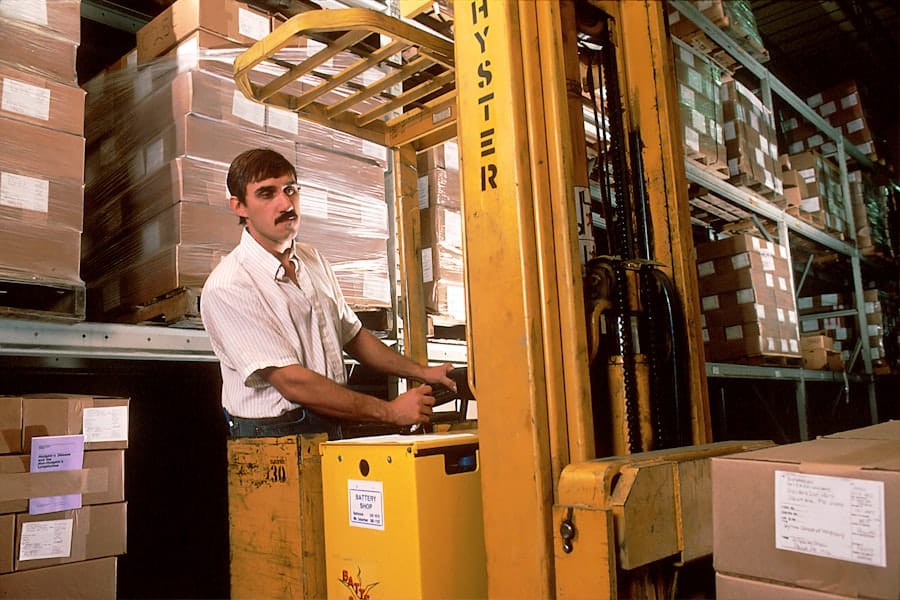Cross-border supply chains are an integral component of the global economy, facilitating the movement of goods and services across international borders. These supply chains encompass a complex network of suppliers, manufacturers, distributors, and retailers that operate in different countries, each with its own regulatory frameworks, cultural nuances, and logistical challenges. The rise of globalization has significantly expanded the scope and scale of cross-border supply chains, enabling businesses to tap into new markets, access diverse resources, and optimize production processes.
As companies strive to remain competitive in an increasingly interconnected world, understanding the intricacies of cross-border supply chains becomes paramount. The dynamics of cross-border supply chains are influenced by various factors, including trade agreements, tariffs, and geopolitical tensions. For instance, the North American Free Trade Agreement (NAFTA), which was replaced by the United States-Mexico-Canada Agreement (USMCA), has had profound implications for supply chain operations in North America.
Similarly, the ongoing trade disputes between major economies can disrupt established supply routes and necessitate rapid adjustments in sourcing strategies. As businesses navigate these complexities, they must also consider the impact of technological advancements that can enhance efficiency and responsiveness in their supply chain operations.
Key Takeaways
- Cross-border supply chains are essential for global trade and involve the movement of goods and services across international borders.
- Challenges in cross-border supply chains include customs regulations, documentation requirements, language barriers, and transportation delays.
- Automation plays a crucial role in streamlining cross-border supply chains by reducing manual processes, improving accuracy, and increasing efficiency.
- Automation technologies such as robotics, artificial intelligence, and blockchain are being used to optimize cross-border supply chain operations.
- The benefits of automation in cross-border supply chains include cost savings, faster delivery times, improved visibility, and better risk management.
The Challenges of Cross-Border Supply Chains
Navigating cross-border supply chains presents a myriad of challenges that can hinder operational efficiency and increase costs. One of the most significant obstacles is the variability in regulatory compliance across different jurisdictions. Each country has its own set of import/export regulations, customs procedures, and documentation requirements.
For example, a product that is compliant with safety standards in one country may not meet the criteria in another, leading to delays at customs or even fines. This regulatory complexity necessitates a thorough understanding of local laws and can require businesses to invest in specialized knowledge or partnerships to ensure compliance. Another challenge is the inherent unpredictability associated with international logistics.
Factors such as political instability, natural disasters, and fluctuating currency exchange rates can disrupt supply chains and lead to unexpected delays. For instance, the COVID-19 pandemic highlighted vulnerabilities in global supply chains as lockdowns and restrictions led to significant disruptions in transportation networks. Companies that relied heavily on just-in-time inventory systems found themselves facing shortages and increased costs as they struggled to adapt to rapidly changing circumstances.
This unpredictability underscores the need for robust risk management strategies that can help businesses anticipate and mitigate potential disruptions.
The Role of Automation in Streamlining Cross-Border Supply Chains

Automation plays a pivotal role in addressing the challenges associated with cross-border supply chains by enhancing efficiency, accuracy, and responsiveness.
Automation can facilitate real-time tracking of shipments, enabling companies to monitor their goods as they move across borders.
This visibility not only enhances operational efficiency but also improves customer satisfaction by providing accurate delivery estimates. Moreover, automation can significantly reduce the time required for customs clearance processes. Automated systems can handle documentation and compliance checks more swiftly than manual processes, expediting the movement of goods through customs.
For instance, electronic data interchange (EDI) systems allow for seamless communication between trading partners and customs authorities, ensuring that all necessary documentation is submitted accurately and promptly. This capability is particularly crucial in cross-border transactions where delays at customs can lead to increased costs and lost sales opportunities.
Automation Technologies in Cross-Border Supply Chains
A variety of automation technologies are transforming cross-border supply chains, each offering unique capabilities that enhance operational efficiency. Robotic Process Automation (RPA) is one such technology that automates repetitive tasks such as data entry and invoice processing. By deploying RPA solutions, companies can free up human resources to focus on more strategic activities while ensuring that routine tasks are completed with greater speed and accuracy.
Artificial Intelligence (AI) and machine learning are also making significant inroads into supply chain automation. These technologies enable predictive analytics that can forecast demand patterns based on historical data and market trends. For example, AI algorithms can analyze vast amounts of data to identify potential disruptions in the supply chain before they occur, allowing businesses to proactively adjust their sourcing strategies or inventory levels.
Additionally, AI-driven chatbots can enhance customer service by providing real-time updates on order status and addressing common inquiries without human intervention.
Benefits of Automation in Cross-Border Supply Chains
The benefits of automation in cross-border supply chains are manifold, ranging from cost savings to improved customer satisfaction. One of the most immediate advantages is the reduction in operational costs associated with manual processes. By automating routine tasks, companies can decrease labor costs and minimize errors that often lead to costly rework or delays.
This cost efficiency is particularly important for businesses operating on thin margins or facing intense competition in global markets. Furthermore, automation enhances agility within cross-border supply chains.
Automated systems provide real-time data insights that empower decision-makers to adapt their strategies quickly. For instance, if a supplier faces a disruption due to political unrest in their region, automated systems can help identify alternative suppliers or logistics routes within minutes, ensuring continuity of operations.
Case Studies of Successful Automation Implementation

Robotics in Warehousing Operations
DHL Supply Chain has successfully integrated robotics into its warehousing operations across multiple countries, yielding impressive results. By deploying autonomous mobile robots (AMRs) for picking and sorting tasks, DHL has significantly increased its operational efficiency while reducing labor costs. The robots work alongside human employees, allowing for a collaborative approach that maximizes productivity without compromising safety.
AI-Driven Analytics for Supply Chain Optimization
Unilever has also seen significant success by embracing AI-driven analytics to optimize its supply chain operations globally. By utilizing machine learning algorithms to analyze consumer demand data across different markets, Unilever has been able to enhance its forecasting accuracy significantly. This improved visibility into demand patterns allows the company to adjust its production schedules and inventory levels accordingly, reducing excess stock and minimizing waste.
Improved Efficiency and Sustainability
As a result of implementing automation technologies, both DHL and Unilever have not only improved their bottom line but also enhanced their sustainability efforts. By reducing labor costs and excess stock, these companies have minimized their environmental footprint, contributing to a more sustainable future. These success stories demonstrate the potential of automation technologies to transform cross-border supply chains and drive business growth.
Future Trends in Automation for Cross-Border Supply Chains
As technology continues to evolve, several trends are emerging that will shape the future of automation in cross-border supply chains. One such trend is the increasing adoption of blockchain technology for enhancing transparency and traceability within supply chains. Blockchain’s decentralized ledger system allows for secure and immutable record-keeping of transactions, making it easier for companies to verify the authenticity of products as they move across borders.
This capability is particularly valuable in industries such as pharmaceuticals and food where safety and compliance are paramount. Additionally, the rise of the Internet of Things (IoT) is set to revolutionize cross-border supply chains by enabling real-time monitoring of assets throughout their journey. IoT devices equipped with sensors can provide valuable data on temperature, humidity, and location during transit, ensuring that products are stored and transported under optimal conditions.
This level of visibility not only enhances operational efficiency but also helps companies maintain compliance with regulatory requirements related to product safety.
The Importance of Automation in Enhancing Cross-Border Supply Chains
In an era characterized by rapid globalization and technological advancement, automation has emerged as a critical enabler for enhancing cross-border supply chains. By addressing challenges such as regulatory compliance and logistical unpredictability, automation technologies empower businesses to operate more efficiently while reducing costs and improving customer satisfaction. The successful implementation of automation solutions by industry leaders serves as a testament to their transformative potential.
As companies continue to navigate an increasingly complex global landscape, embracing automation will be essential for maintaining competitiveness and resilience in cross-border supply chains. The future promises further advancements in technology that will continue to reshape how goods are produced, transported, and delivered across borders. In this context, organizations that prioritize automation will be better positioned to thrive in an ever-evolving marketplace.
In a related article discussing the latest advancements in technology, Huawei has recently unveiled the Mate 50 Pro, a smartphone that promises to revolutionize the way we communicate and stay connected. With features like a powerful processor and cutting-edge camera technology, the Mate 50 Pro is set to redefine the smartphone industry. To further enhance efficiency in business operations, companies can also consider implementing ERP subscription services, as discussed in another article. By utilizing ERP software, organizations can streamline their processes and improve overall productivity. These technological innovations, including automation in supply chains, are crucial in today’s fast-paced global market. To read more about the Huawei Mate 50 Pro or ERP subscription services, visit here or here.
FAQs
What is the role of automation in cross-border supply chains?
Automation plays a crucial role in streamlining cross-border supply chains by reducing manual processes, increasing efficiency, improving accuracy, and enabling real-time tracking and visibility of goods.
How does automation help in reducing delays in cross-border supply chains?
Automation helps in reducing delays by automating customs clearance processes, providing real-time tracking of shipments, and enabling better coordination and communication between different parties involved in the supply chain.
What are the key benefits of using automation in cross-border supply chains?
Some key benefits of using automation in cross-border supply chains include faster customs clearance, reduced paperwork, improved inventory management, enhanced visibility and transparency, and overall cost savings.
What are some examples of automation technologies used in cross-border supply chains?
Examples of automation technologies used in cross-border supply chains include automated data capture systems, RFID technology, automated customs clearance systems, electronic data interchange (EDI), and supply chain management software.
How does automation improve compliance with cross-border trade regulations?
Automation helps improve compliance with cross-border trade regulations by ensuring accurate and timely submission of required documentation, reducing the risk of errors, and enabling better visibility and control over the movement of goods across borders.

